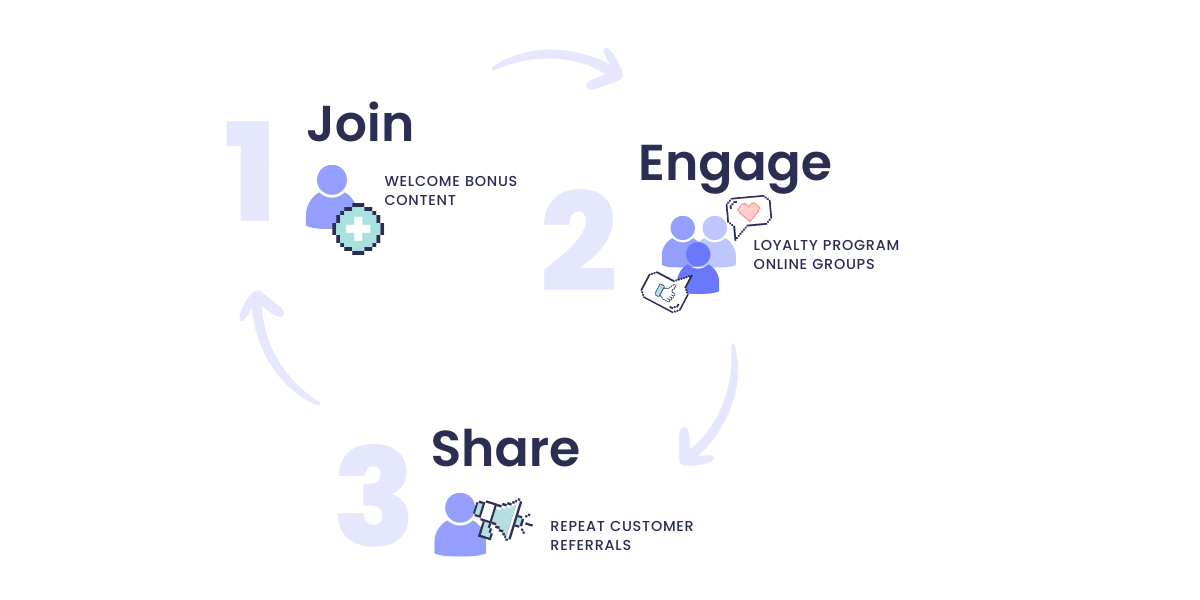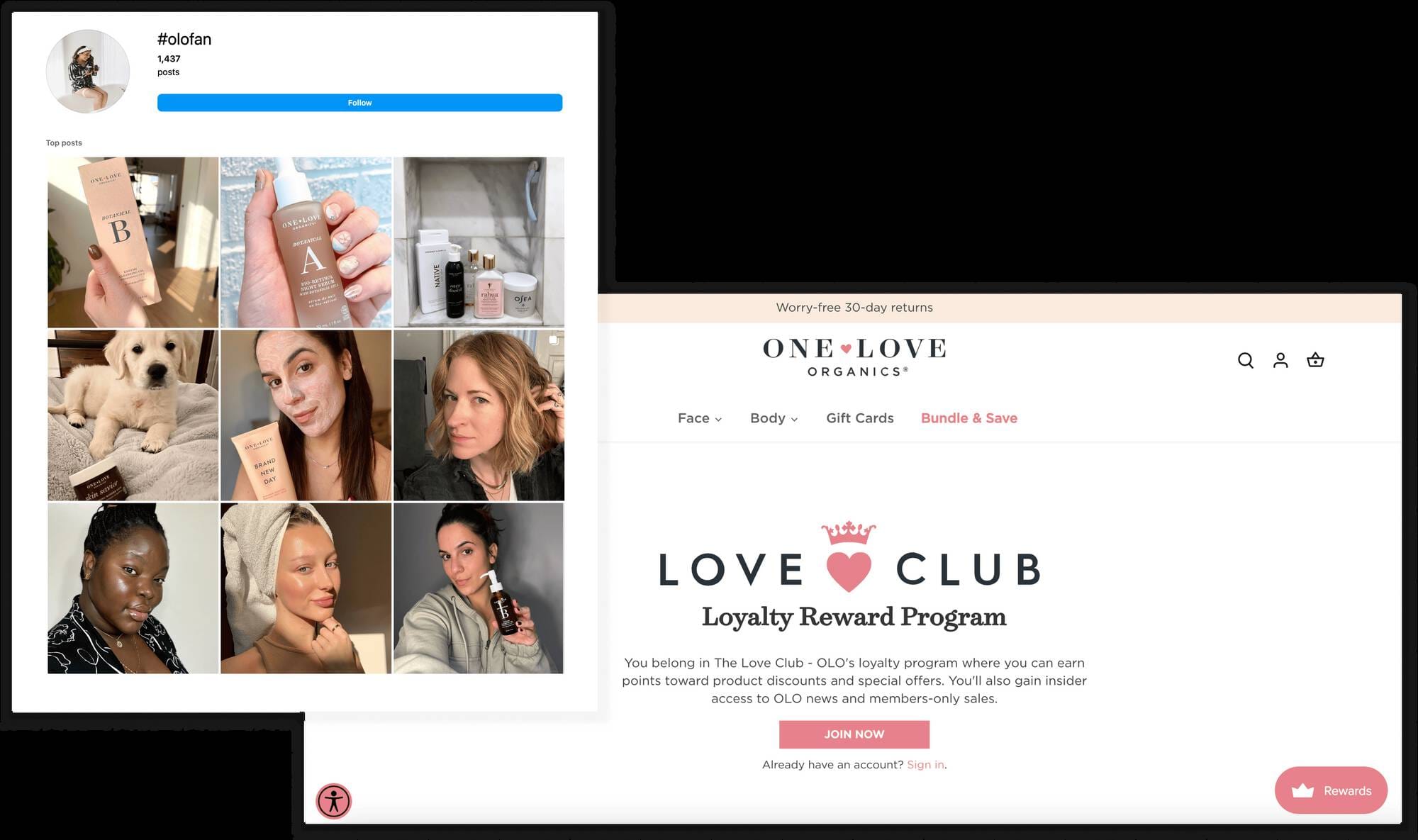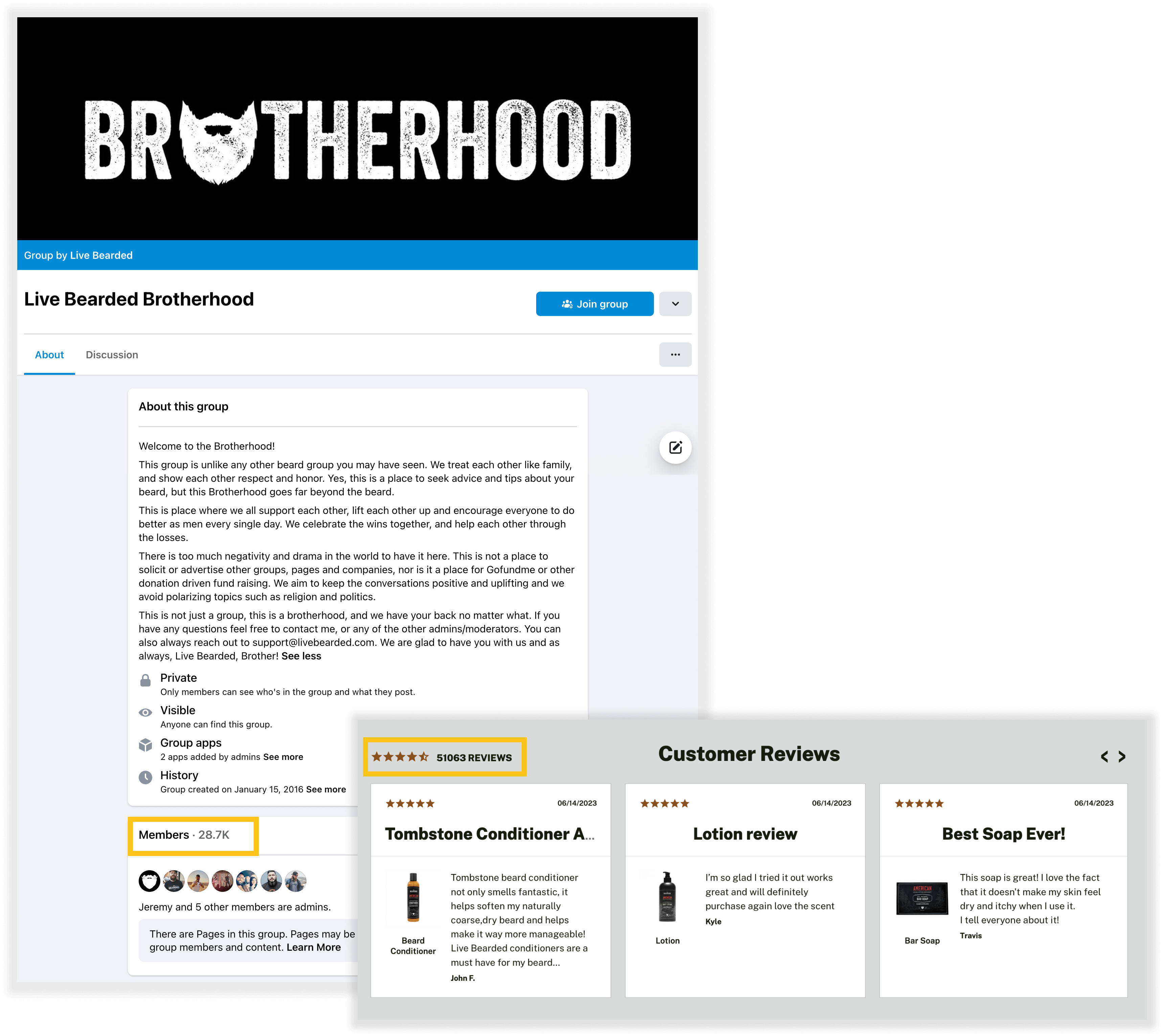If you’ve ever joined a dedicated Facebook group for your favorite clothing brand or commented on a forum about a product you love, then you’ve engaged with an online brand community. When you’re passionate about a brand, the chance to share your thoughts and opinions with a group of like-minded people is exciting. That’s what creating a strong brand community is all about.

While strategies like aggressive advertising campaigns improve your brand awareness and help you with short-term sales, creating an online brand community is the only way to achieve sustainable growth. There are 3 key phases that you need to motivate your customers to move through to achieve a strong community — joining, engaging, and sharing your brand.
Even if you’re just starting, there are a few things your small business can do right now to begin moving through the brand community cycle.
Give customers a reason to join in the first place
A brand community is only as strong as its members. The mark of a true brand community is when members interact with one another without any brand involvement. You need people to be excited about joining your online community for it to appeal to members. The main value of a brand community is the ability to interact with other like-minded customers, so you need to encourage your passionate customers to join so others can see value in it.
The first step you need to take is to define your ideal customer persona and your brand position. Establish your driving brand values and ensure they align with what matters to your customers. When customers are passionate about something, they constantly look for other people who share their passions.

One Love Organics (OLO) is a brand that knows who its customers are and, more importantly, what matters to them. With messages encouraging their values of self-love, clean products, and worry-free beauty, members can see the value right away. They’ve also given customers a clear description of what value their loyalty community provides by mentioning rewards such as special offers and member-only sales.
Another community building strategy is to brand your rewards program as a like-minded community with an inviting program name. Using words like club, family, or squad reflects the idea of being a part of something bigger than yourself. OLO’s Love Club perfectly combines its values of love and support to create a welcoming community that customers want to be a part of.

The final (and perhaps the most motivating) method is to offer rewards and points-earning opportunities that encourage joining in the first place. Welcome points provide a sense of instant gratification by showing the value right in a quantifiable way right off the bat. Another great example is birthday points since everybody celebrates one and can gain value.

Begin by motivating your customers to join your community because active members are the key ingredient to a thriving online brand community.
Key takeaways
- Clearly define your ideal customer persona and align your brand values with theirs.
- Enhance your customer’s experience through your content and rewards program branding.
- Select rewards that incentivize members to join like welcome points or birthday points.
Increase customer engagement by building an online community
The defining factor of a brand community is an environment where customers can interact with one another. If nobody is engaging with one another, then members won’t see the value of being a part of the community and new members won’t be encouraged to join.
In fact, with a disengaged customer base you run the risk of members leaving to join a competitor’s community, which leads to you having to invest more effort, time, and money into customer acquisition strategies like advertisements.

Customers want to feel like they are a part of something exclusive, and your rewards program offers the perfect outlet to create this exclusivity. The use of a tiered VIP program is a great way to encourage members to continue engaging with your brand by making purchases, social sharing, or leaving reviews. You can then celebrate with them when they reach a certain status. On top of this, the ability to unlock more valuable rewards in higher tiers keeps your customers around. Livebearded has taken advantage of this method by offering members-only bonus points events, early access to new products, and free gifts to increase community engagement.

With the average internet user spending 147 minutes per day on social media, your online brand community strategy wouldn’t be complete without taking social media into account. Offering rewards for actions like social media sharing, likes, and comments build your community by giving customers a chance to interact with each other via these social platforms.
With Facebook’s group feature, you can create a Facebook group that is linked to your main page for your program members to interact with one another. Similarly, you could use Instagram’s close friends story feature or Discord. You could also increase the exclusivity of your social media communities by reserving membership for your top VIP tier. Livebearded’s Brotherhood group has attracted nearly 30,000 members by providing an outlet for community members to uplift each other and bring more positivity to each other’s lives.
Additionally, customer review sections on your website are another way for your customers to engage with one another. Including a customer’s reputation on a product review in the form of “verified buyers” or badges for your top customers is a great way to give more authority to your engaged customers. You can also reward your customers with points for leaving reviews and offer bonus points for photo or video reviews.
Finally, just because your brand community is created online doesn’t mean it has to stay online. Bringing your community offline and offering experiential rewards, like exclusive meet-up events, gives customers a chance to meet each other in person and feel more connected to one another through your brand.
Once you’ve attracted customers to join your brand community it’s time to set the stage for engagement.
Key takeaways
- Give your customers the chance to interact with one another.
- Launch a VIP program to motivate members to stay engaged with your brand.
- Offer exclusive rewards like bonus points events, free products, or early access to sales for your highly-engaged customers.
- Encourage community interactions and engagement through social media groups and online forums.

Make your brand community share-worthy
A brand community offers the most value when it’s continually growing and thriving. You must give your engaged community members a reason to share your community with others to keep growing sustainably.
Powerful brand advocates are often the most valuable marketing tool since 92% of consumers admit they trust referrals from friends and family more than any form of advertising. Embedding sharing actions such as referral programs, or social media earning opportunities into your rewards program is a great way to encourage your brand members to share your program.

Referral programs are one of the best ways to bridge the gap from the share to join phases. When engaged customers share the brand with their network they are essentially driving the joining action and restarting the brand community cycle with a new member.
The discount from a referral is an incentive to join a new brand community for the newcomer and the points or discounts for the existing member are an incentive to share the program. As the UK’s first-ever leak-proof period wear, WUKA faced a lot of stigma and doubt from consumers when launching in 2017. The feminine hygiene brand was able to overcome these obstacles by leveraging the power of a referral program, rewarding both new and returning customers with £5 off their order.
With one pair of period proof underwear costing around £12, the reward lets customers try out the product for nearly half the price, minimizing the risk associated. That coupled with the trust that comes with a personal referral has allowed the brand to generate significant referral revenue through the program.

One of the other best ways to get members to share your brand community is online through social media. Your most engaged members are already sharing content on social media, so rewarding them for these actions further encourages that behavior. This type of social engagement also provides valuable user-generated content you can share that exposes your brand to an even larger audience.

While it builds your online community, leveraging your social media effectively can also directly increase your sales. 22% of consumers prefer to discover products on social media with 46% of Gen Z customers discovering a new product on social media in the last 3 months. To further encourage social media engagement, branded hashtags are another cheap and effective way to leverage your brand advocates and make it easier for your customers to find one another and connect.
Finally, people like to hear how your brand is affecting other members of your brand community. Including customer stories or testimonials on your social profiles or website are another way to allow your customers to inspire one another. WUKA’s user-generated content that it shares on its profile is a great example of displaying its dedication to its customers in an extremely shareable video format.
Give your customers both a reason and method to share your brand community, and sit back, relax, and watch it grow!
Key takeaways
- Include a referral program to close the loop from the sharing to the joining phase.
- Reward members for social media sharing to increase brand exposure to new audiences.
- Create branded hashtags to make it easier for your community members to find one another.
- Include a customer stories section on your website.
Start building your brand community today
Whether you launched your small business a few months ago or ten years ago and are looking to keep growing, creating a strong brand community can help you get there. Every brand community starts with a few members who believe in the brand beyond the products. Use these community-building techniques to start building your own brand community from scratch today.
Editor’s Note: This post was originally published October 9, 2018 and was updated for accuracy and comprehensiveness on June 19, 2023.








